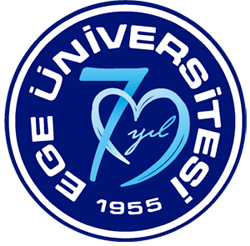TRANSLEX
Translation activity played a significant role in the 18th century in terms of a westernization and modernization of the Ottoman State. It was very influential in shaping political and scientific ideas as well as in spreading the ideas of the enlightenment age of the Ottoman period. These developments continued during the foundation years of Republic of Turkey. Those “secret heroes”, translators, are less well known than the contributions they made to Turkish literature. Well, who were those translators? Whose works were translated? From which languages were they translated and when were they published and by which publishing firms?
This online lexicon Türkçe Çevirmenler Sözlüğü: Dünya Edebiyatından Çeviriler, we aim to compile lists of translators who enriched Turkish literature by means of translation, following the example of other lexicons, namely the Translators’ Dictionary of Sweden, Svenskt Översättarlexikon (www.oversattarlexikon.se), and Germersheimer Übersetzerlexikon (www.http://uelex.de), which is being compiled at the German Department of the Faculty of Translation and Interpreting of Johannes Gutenberg University (Mainz/Germersheim), Germany. The idea of “Türkçe Çeviriler Bibliyografyası: Dünya Edebiyatından Çeviriler” (Bibliography of Turkish Translations: Literatures of the world in Turkish translation) has been also developed within the context of the GIP (Germanistische Institutspartnerschaft) partnership between Ege University and Johannes Gutenberg University. The project began with a lengthy search for a suitable methodology. The resources we decided to use for identifying works translated into Turkish are the National Collective Catalogue database of TUBITAK and ULAKBIM as well as the Republic of Turkey Ministry of Culture and Tourism General Directorate of Libraries and Publications that contain the records of, among others, Ege University Library, Hacettepe University Library, Istanbul University Library, Bogazici University Library and National Library. For this lexicon, the language and literary works, which were printed in Latin alphabet and translated into Turkish from the early years of the Republic to the year 2016, were examined in terms of literary genres such as prose, verse and theater, and the records of 18.741 translated works and 6.006 translators were identified. For more information: Öncü, Mehmet Tahir/ Sertdemir, Bahar Aliye/ Abacı, Gökhan (2017): Türkçe Çeviriler Bibliyografyası: Dünya Edebiyatından Çeviriler. İstanbul: Hiperlink.
Then, information regarding the authors, translators, publication years and publishing firms of these works was researched. The essential aim of our lexicon is to list works which have been translated into Turkish and provide a resource book for translation studies researchers. In an early stage of this project, which is the result of long efforts, we considered the text genres and languages we wanted to cover. Ultimately, we decided to classify the literary works, which were translated from 33 languages into Turkish, by their genres. For the future, we aim to include texts translated from a foreign language into Turkish which belong to non-literary genres. In compiling our lists, we only considered the first edition of each work; in other words, we did not include other editions of the same work by the same translator and the same publishing firm. However, in case of a different translator of the same work or a different publishing firm, this work was added to the list as a new work. In case of the same translator of the same work, the publishing firm’s information was taken as a basis, and in case the publishing firm’s information was different, then the work was included in the list as a new work.
One of the most significant aims of the project is to emphasize the role of translation and the translator, and thus to increase the translator’s status and prominence. We are of the opinion that this project will be helpful for both Turkish and foreign academics who work in this field. This lexicon is quite comprehensive in terms of archiving the translated works, and also constitutes a model for further studies.
The languages and literatures included in our lexicon are as follows (in alphabetical order of the Turkish designations):
These lists are not final, of course. It is planned to conduct other projects in order to progressively expand and improve the lists. In addition to this, we aim to introduce biographical studies in order to present translators’ lives and translation activities and thus to create and strengthen a translator database. Following you can find the preliminary list:
We are very grateful to everyone who has contributed their interests and support to the planning, research, and production of this lexicon. However, some mistakes are inevitable in such a comprehensive project; we would therefore like to invite readers to alert us to any errors or problems. This will contribute to the quality of our further researches.
Mehmet Tahir ÖNCÜ & Bahar Aliye SERTDEMİR









